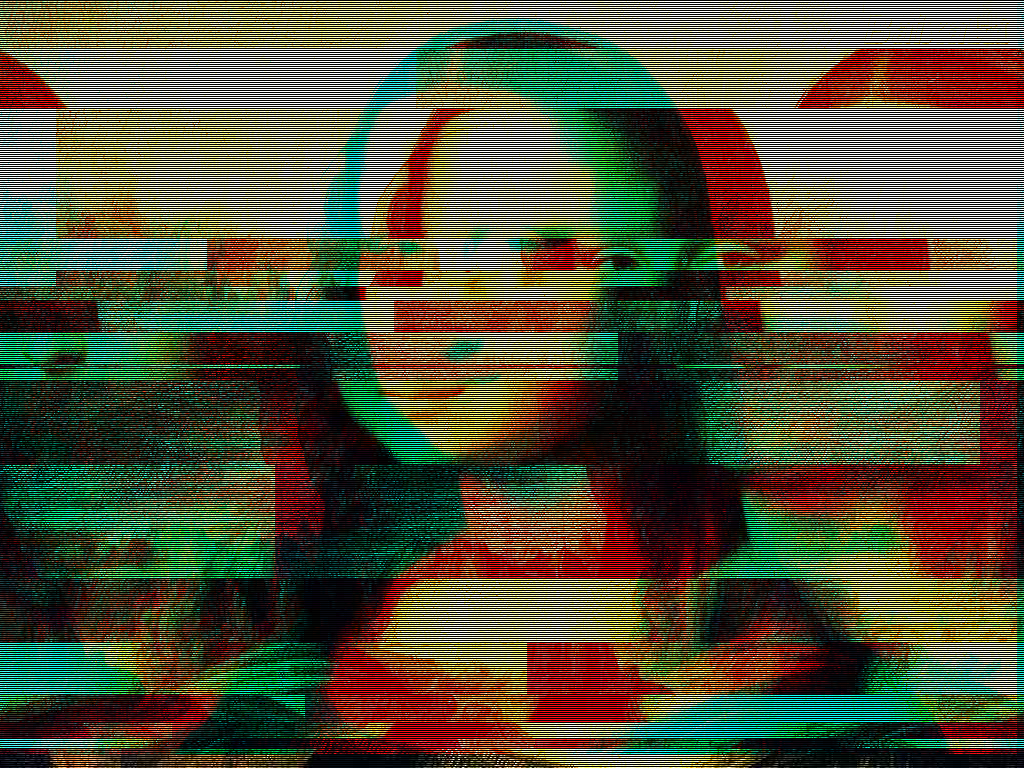In the age of hyper-virtual reality, it becomes increasingly difficult to distinguish between AI-generated creations and human gestures. Everything functions as a continuous mirror, with each reflection precisely calibrated and every color meticulously programmed, to the point that the unexpected seems entirely excluded from the experience. Within this context, the glitch emerges as a revealing interruption in a world engineered for flawless perfection.
Could this rigid hyper-reality, so polished in its surfaces, be the modern equivalent of the neoclassical naturalist art that, in the 19th century, delivered such precision it ceased to surprise?
Just as modern art reacted against classical paradigms, the glitch proposes its own rupture with a petrified version of reality. It introduces a new poetics of error and deviation, questioning the boundaries between illusion and failure.
Aesthetics of Error and Technological Disruption
The term glitch first appeared in the 1940s in radio broadcasts, used by announcers to describe unexpected technical faults. In the following decade, it migrated into television and radio engineering, and by the 1960s, NASA had adopted it to define small voltage fluctuations in rocket circuits—what they called “slight glitches.” Today, the glitch has become a visual and sonic language, brutally and beautifully exposing the fractures within digital systems.

Jumping pixels, corrupted frames, and piercing noises reveal the hidden technological layer beneath the image, acting as symbolic cracks in an apparently perfect surface. Instead of concealing the flaw, the glitch displays it openly. Artists working in this space embrace error as aesthetic material, creating works that challenge the logic of seamless operation. In this way, malfunction itself becomes a critical symbol.
Glitch as a Digital Rite of Passage
In the future, electronic “Rastafarians” will wander. They are inspired by the nomads from Neuromancer. They will roam networks and virtual metropolises. So, they will search for fractures in the code. These artist-hackers will blend fragments of code. They will mix them with synthetic chants. They will erode protocols with looping refrains.
Glitch art will introduce noise into scripted narratives. It will set simulated landscapes ablaze. This will happen with unpredictable and poetic artifacts.
Each glitch will serve as a “redpill.” It is an invitation to awaken from a simulated trance. It helps us see the invisible mediation. This mediation underpins our digital worlds. Corrupted installations will appear in real time. We will see desynchronized projections. Surfaces will fragment into luminous grids. These will force the body to reposition itself. It must find its place between flesh and byte.
Cities will be sliced by neon. Towers will rise over unstable circuits. Amid this, the glitch will cease to be a flaw. It will become a rite of passage. It will be a prophecy. This prophecy reveals the machine’s inner workings. It urges the viewer never to return. They must not return to a flawlessly engineered reality.



